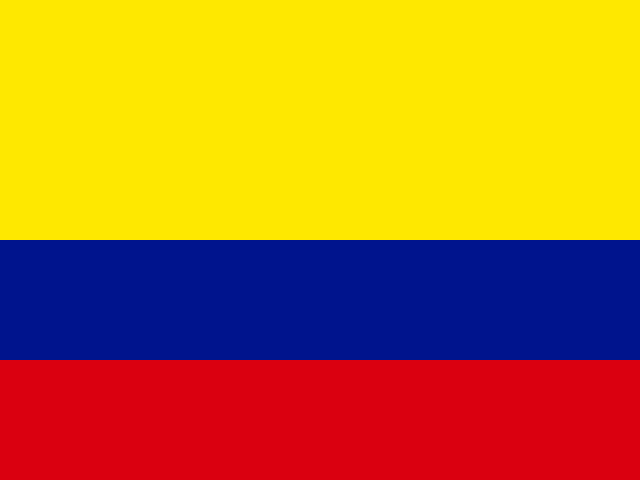
Colombia
Media ownership is highly concentrated in Colombia, with a handful of groups controlling most major TV, radio, and print outlets. But the growing popularity of international streaming platforms and the widespread use of artificial intelligence are forcing media organisations to make innovative bets.
Major changes have taken place this year at Canal 1 after the Spanish group Prisa struck a deal with the administrator of this state-owned TV channel to become its primary content provider. As a result, the station, the third most-watched channel in Colombia, suffered layoffs and a radical change in its programming. Its historic CM& newscast, which had been on air for 30 years under influential founder and director Yamid Amat, was axed. Prisa began to broadcast seven television news bulletins during the day with local content, but most of Canal 1’s schedule is now retransmitted radio programmes from Prisa-owned stations Caracol Radio and W Radio with fixed-camera shots of talk show personalities.
The dominance of international streaming platforms such as Netflix and Disney+ has led traditional channels to launch their own streaming enterprises or to produce content for these global platforms. Grupo Valorem's Caracol TV launched a TV app, Ditu, with 12 free channels including 24/7 news, entertainment, sports, and radio. It joined RCN, the second largest private TV and radio channel in the country, which had launched its own Canal RCN app at the start of 2025. This streams reality shows and sport coverage alongside its normal stations. RCN also signed an agreement with the streaming platform Vix to offer exclusive content in Colombia. Caracol TV news still dominates the offline news media consumption (43%). El Tiempo.com (26%) is again the online leader.
The use of artificial intelligence amongst news organisations has increased. It is now being used to produce content, engage audiences, monetise content, and build tools that facilitate reporting and verification. The Colombian public is much more comfortable when AI is used as a tool under the primary supervision of journalists or producers, for instance producing summaries or translations, than when it produces information on its own with little human intervention, according to our survey.
The national government changed its communication strategy with live broadcasts of meetings of the Council of Ministers, led by President Gustavo Petro. He argued that the state has the right to interrupt normal TV programming with ‘relevant information for the citizenship’, but a High Court order later blocked any automatic interruption on the two main commercial channels, RCN and Caracol TV. One of Petro’s intentions was to promote transparency and it is part of a wider trend in the region for leaders to build direct communication with the public, bypassing traditional media intermediaries. The first broadcast, however, did not go according to plan, with the meeting becoming a heated on-air cabinet argument. Five ministers resigned as a consequence.
Meanwhile tensions emerged at public broadcaster RTVC, including accusations of workplace harassment as well as criticism that its programming was being used as a propaganda platform for the government. Holman Morris, a politician from the left and former journalist known for his investigative reporting on Colombia's armed conflict, stepped away temporarily from his role as manager of the news division of RTVC to concentrate on defending himself after he and his family received online threats.
Media political polarisation seems to have increased across the board, especially as the country gears up for a presidential election in May 2026. The atmosphere of political confrontation seems to be having a damaging effect on people’s trust of the media, which has fallen to the lowest level (32%) since Colombia joined the Digital News Report survey. The adoption by online influencers from both extreme left and extreme right of a mocking tone, verging on hate speech, has become somewhat normalised for political discourse.
Meanwhile, six out of ten Colombians (59%) are concerned about falsehoods circulating on the internet, and most believe that politicians and social media influencers represent the greatest danger to true information. At the same time, social media continue to be essential for distributing, sharing, and consuming news. Facebook is the platform through which people consume the most news (47%), despite the drop in its distribution of news since 2021, followed by WhatsApp (35%), YouTube (34%), and Instagram (28%). However, the fastest growth in news consumption on social networks is recorded by TikTok (27%), which grew 5pp compared to last year.
Víctor García Perdomo
Professor and Director of the Research Center for Digital Media & Society, Universidad de La Sabana, Colombia
Changing media
Broadcast news on radio and television remains a powerful source of news in Colombia, especially with older people, but it is increasingly challenged by social media and video platforms such as Facebook, YouTube, and TikTok with younger users.
Pay for online news
14%
(-1)
Trust in news overall
32%
(-2)
=35/48
High levels of polarisation combined with government criticism of much of the media may be contributing to further declines in trust in the news over the last few years. Noticias Uno, an independent television newscast produced by NTC Televisión, and Señal Colombia, which carries news from public broadcaster RTVC, remain the most trusted brands out of those surveyed.

